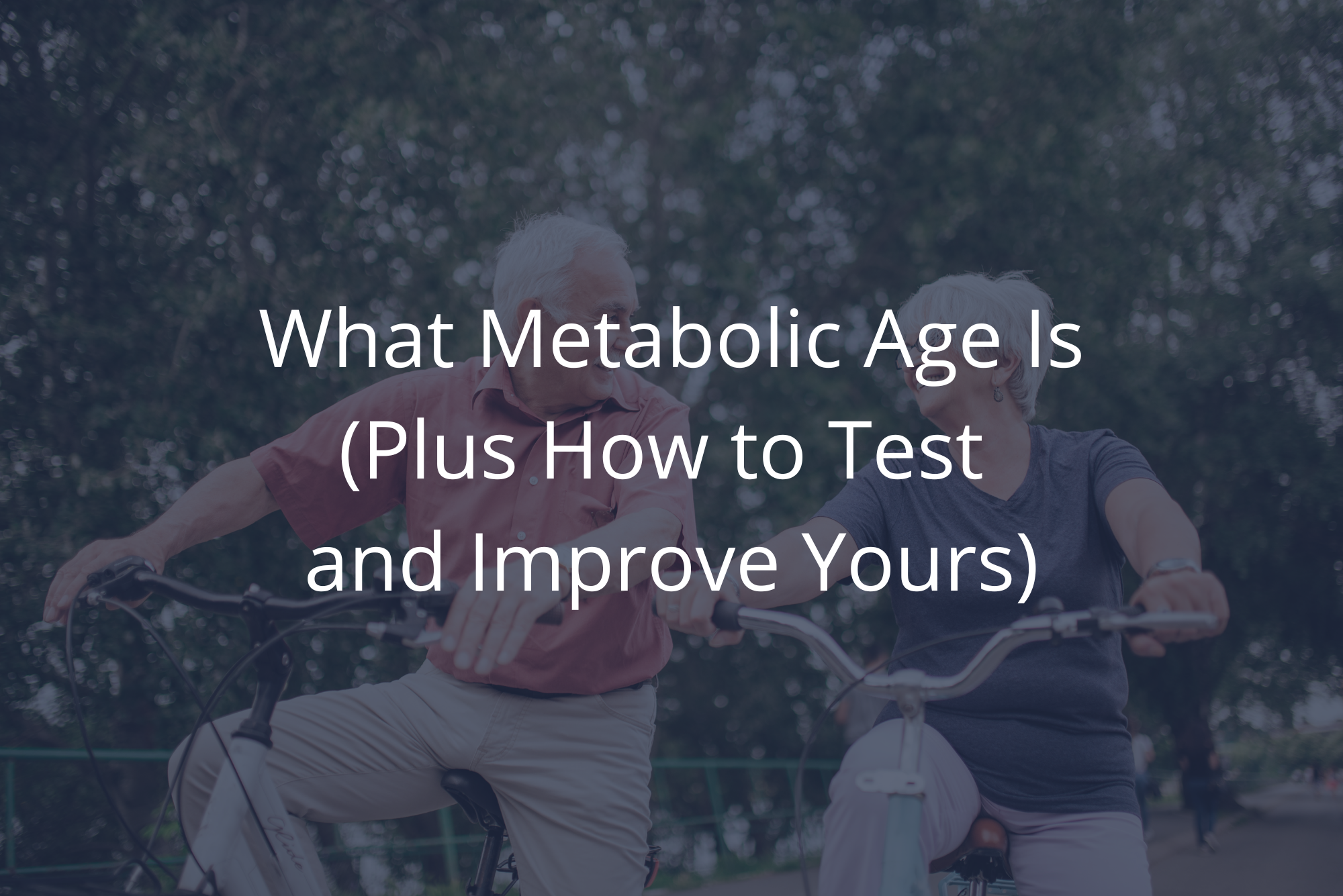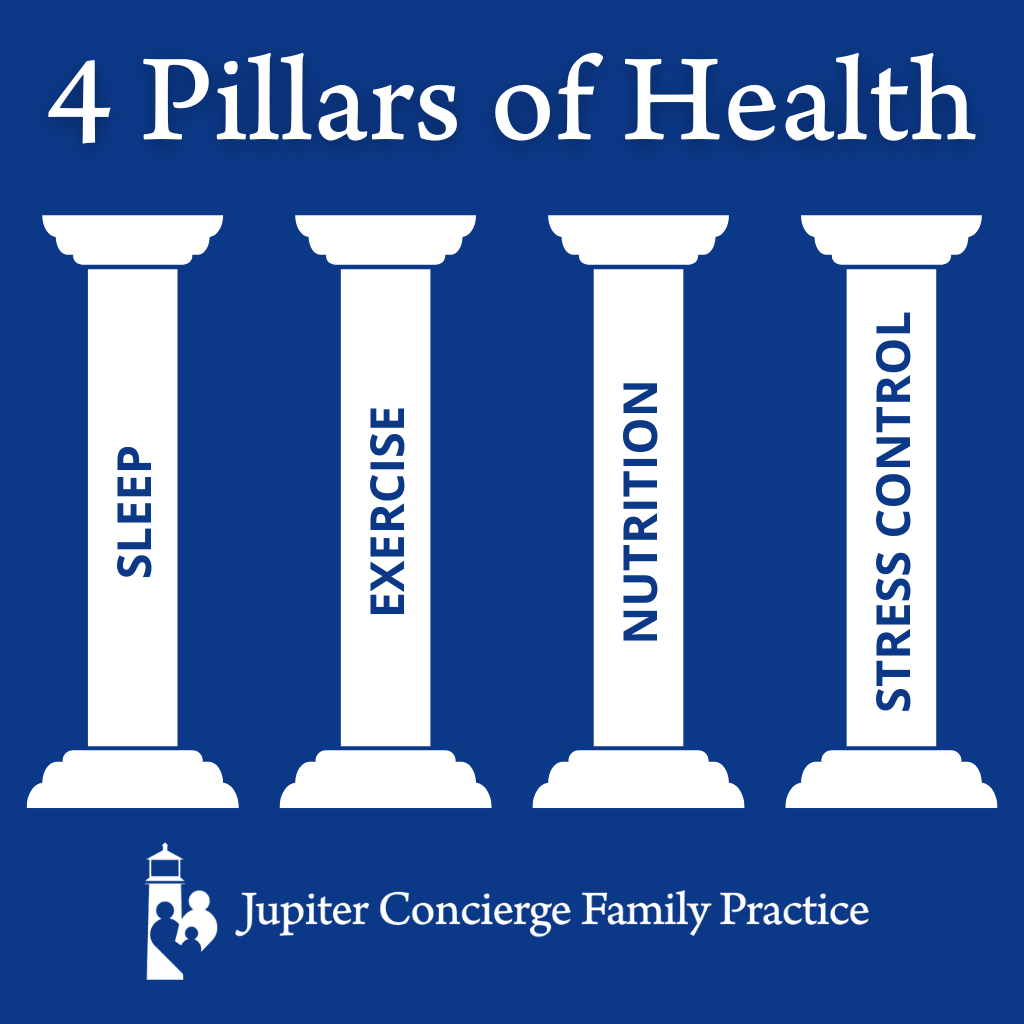
It’s not news that we, the people, are just concerned about getting older. It’s that we want to explore ways to stay healthy as we age and our metabolism shifts.
As a result, indiscriminate Google searches can produce infinite contradictory information (and misinformation) on the internet. So, what’s actually important about health, aging, and metabolism, and — of the important metrics — what’s within our sphere of influence?
Today we’ll delve into one popular metric: metabolic age. We’ll discuss what metabolic age is, how much it matters, how to find yours, and what you can do about it.
Chronologic vs. Metabolic Age
Chronologic age is the age we’re all most accustomed to. It’s simply how old we are, calculated in years. (Or in years plus months if you’re under the age of 10, when such distinctions carry enormous weight.)
Metabolic age, on the other hand, isn’t measured the same way. It’s how much energy your body requires when resting compared with people of the same chronologic age.
Metabolic Age, Explained
Let’s peer into the whats of metabolic age, so it’s a little less mysterious-sounding.
The body’s Basal Metabolic Rate, or BMR, is the energy required for basic bodily functions. It takes energy to function. Even if we’re just binge-watching on the couch, our bodies are at work circulating blood, digesting food, and doing the general work of staying alive.
That rate, the BMR, is going to vary by individual. In other words, two individuals binge-watching together on the couch will have different BMRs — even if they share many commonalities — because their bodies are different from each other.
Let’s imagine these two TV fans are the same age, gender, and race. But, let’s say one is a sedentary office worker, while the other is a full-time aerobics instructor. Their baseline energy levels as they while away the hours will not be equal.
That’s because the more muscle mass we have, the higher our basal metabolic rate. In other words, people with more muscle mass burn more calories while they’re doing nothing. It takes more energy for the body to maintain a muscular state than a fatty state.
A higher BMR means a lower metabolic age than your chronologic age.
Factors That Influence Metabolism
The bad news is that your basal metabolic rate (BMR) is largely determined by your genetic makeup — about 70%.
Since “choose your parents” isn’t on the list of human possibilities, your sphere of influence when it comes to BMR is limited. That said, the 30% that is within your control is full of options, because it’s based on lifestyle factors.
Here’s what you can do to shape your metabolic age: Focus on the 4 Pillars of Health.
Pillar 1: Sleep
Sleep is the body’s time for internal clean-up and repair. Both the quality and quantity of your sleep are important.
Pillar 2: Exercise
Of course, movement is important for overall health. In terms of metabolic age, though, you’ll want to pay careful attention to exercises that build muscle mass. The more muscle you have, the lower your metabolic age. (Remember, muscles burn more energy than fat, which raises your BMR.)
Pillar 3: Nutrition
In general, it’s important to make healthy food choices. There’s a lot that goes into robust nutrition, but there are some specific points to consider when looking at metabolism.
Pay attention to micro-nutrients: vitamins, minerals, and amino acids. Vitamins and minerals are the rate-limiting step in metabolism, and amino acids are the building blocks of muscle. You also need to ensure you’re getting enough healthy calories to support your workouts so you can build muscle.
Pillar 4: Stress Control
One of the most damaging influences on human health is stress. Controlling the amount of stress you allow into your life — and regularly eliminating the stress you can’t prevent — will improve your immune responses, your digestion, and your ability to absorb nutrients.
What’s My Basal Metabolic Rate?
When it comes to biomarkers that can give you a good indication of your metabolic rate, there are two trains of thought.
The first is the use of formulas, like the Harrison-Benedict equation. The Harrison-Benedict equation gives you an estimate of your metabolic rate based on weight and age. However, this is just a guesstimate.
The second and more accurate way to find your metabolic rate is through a bioimpedance analysis (BIA). This means of discovery uses a machine that (painlessly) runs a small electrical current through the body, which analyzes your ratio of muscle to fat. This gives you a more precise idea of your metabolic rate.
Of course, you don’t always need a machine to tell you how well you’re progressing in your health journey. Simply observing how well your clothes fit, or how well you look in a mirror without any clothes on, can give you a good idea of how far you’ve come.
How Important is Metabolic Age?
I’ll cut to the chase — metabolic age is not an end-all measure of health. It’s just another way of expressing other health metrics.
If this kind of data motivates you to take charge of your health, that’s fantastic! Use it to set goals and measure your progress. But if you aren’t motivated by this type of data, turn your focus elsewhere.
The most important way to improve your health is to assess where you are now, modify your lifestyle as needed, and have accountability and measurements to gauge where you are later.

Dr. David Rosenberg
Dr. Rosenberg is a board-certified Family Physician who obtained a BS in Chemistry at Georgia's Mercer University in 1983 and a medical degree from the University of Miami in 1988. He completed his residency in Family Medicine at The Washington Hospital in Washington, Pennsylvania, in 1991 and then practiced Emergency Medicine at Palm Beach Gardens Medical Center for two years. In 1993 he started private practice in Jupiter.
Dr. Rosenberg has been married to his wife Mary for 38 years and they have three grown children together. Some of his interests include being a huge baseball fan, sailing, snow skiing, self-development, and learning to play piano.

